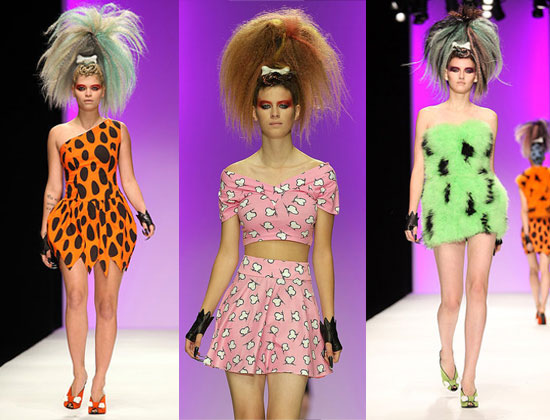Historian Nicholas Rogers, exploring the origins of Halloween, notes that while "some folklorists have detected its origins in the Roman feast of Pomona, the goddess of fruits and seeds, or in the festival of the dead called Parentalia, it is more typically linked to the Celtic festival of Samhain, whose original spelling was Samuin (pronounced sow-an or sow-in)". The name of the festival historically kept by the Gaels and celts in the British Isles which is derived from Old Irish and means roughly "summer's end".
The Irish myths which mention Samhain were written in the 10th and 11th centuries by Christian monks. This is around 200 years after the Catholic church inaugurated All Saints Day and at least 400 year after Ireland became Christian.
The word Halloween is first attested in the 16th century and represents a Scottish variant of the fuller All-Hallows-Even ("evening"), that is, the night before All Hallows Day. Although the phrase All Hallows is found in Old English (ealra hālgena mæssedæg, mass-day of all saints), All-Hallows-Even is itself not attested until 1556.
Development of artifacts and symbols associated with Halloween formed over time. For instance, the carving of jack-o'-lanterns springs from the souling custom of carving turnips into lanterns as a way of remembering the souls held in purgatory. The turnip has traditionally been used in Ireland and Scotland at Halloween, but immigrants to North America used the native pumpkin, which are both readily available and much larger – making them easier to carve than turnips. The American tradition of carving pumpkins is recorded in 1837 and was originally associated with harvest time in general, not becoming specifically associated with Halloween until the mid-to-late 19th century.
The imagery of Halloween is derived from many sources, including national customs, works of Gothic and horror literature (such as the novels Frankenstein and Dracula), and classic horror films (such as Frankenstein and The Mummy). Among the earliest works on the subject of Halloween is from Scottish poet John Mayne in 1780, who made note of pranks at Halloween; "What fearfu' pranks ensue!", as well as the supernatural associated with the night, "Bogies" (ghosts), influencing Robert Burns' Halloween 1785. Elements of the autumn season, such as pumpkins, corn husks, and scarecrows, are also prevalent. Homes are often decorated with these types of symbols around Halloween.
Halloween imagery includes themes of death, evil, the occult, or mythical monsters. Black and orange are the holiday's traditional colors.
Trick-or-treating is a customary celebration for children on Halloween. Children go in costume from house to house, asking for treats such as candy or sometimes money, with the question, "Trick or treat?" The word "trick" refers to a (mostly idle) "threat" to perform mischief on the homeowners or their property if no treat is given. In some parts of Scotland children still go guising. In this custom the child performs some sort of trick, i.e. sings a song or tells a ghost story, to earn their treats. The practice of dressing up in costumes and begging door to door for treats on holidays dates back to the Middle Ages and includes Christmas wassailing. Trick-or-treating resembles the late medieval practice of souling, when poor folk would go door to door on Hallowmas (November 1), receiving food in return for prayers for the dead on All Souls' Day (November 2). It originated in Ireland and Britain, although similar practices for the souls of the dead were found as far south as Italy. Shakespeare mentions the practice in his comedy The Two Gentlemen of Verona (1593), when Speed accuses his master of "puling [whimpering or whining] like a beggar at Hallowmas." In Scotland and Ireland, Guising — children disguised in costume going from door to door for food or coins — is a traditional Halloween custom, and is recorded in Scotland at Halloween in 1895 where masqueraders in disguise carrying lanterns made out of scooped out turnips, visit homes to be rewarded with cakes, fruit and money. The practise of Guising at Halloween in North America is first recorded in 1911, where a newspaper in Kingston, Ontario reported children going "guising" around the neighborhood.
The Irish myths which mention Samhain were written in the 10th and 11th centuries by Christian monks. This is around 200 years after the Catholic church inaugurated All Saints Day and at least 400 year after Ireland became Christian.
The word Halloween is first attested in the 16th century and represents a Scottish variant of the fuller All-Hallows-Even ("evening"), that is, the night before All Hallows Day. Although the phrase All Hallows is found in Old English (ealra hālgena mæssedæg, mass-day of all saints), All-Hallows-Even is itself not attested until 1556.
 halloween costume ideas for |  These group costume ideas can |  halloween constumes ideas for |  Costume For Halloween, 2011, |  halloween costumes for groups |
 halloween constume ideas for a |  Get Halloween costume ideas |  Group Costume Ideas - Creative |  Join my A Fabby Halloween |  Five Monster Fun Halloween |
Halloween imagery includes themes of death, evil, the occult, or mythical monsters. Black and orange are the holiday's traditional colors.
 Group Halloween Costume Ideas |  Group Halloween costume ideas |  7 p NEW: OCD Support Group |  6) Group home escapee 7) Out |  Good Halloween groups costumes |
 halloween constume pirate |  Fullsize Bangkok City Tourist |  Bangkok City Map |  Tags: bangkok map for tourist, |  Sample is not Bangkok City, |
No comments:
Post a Comment